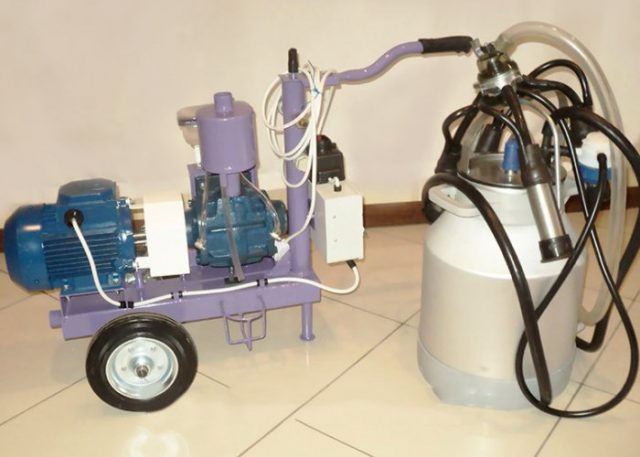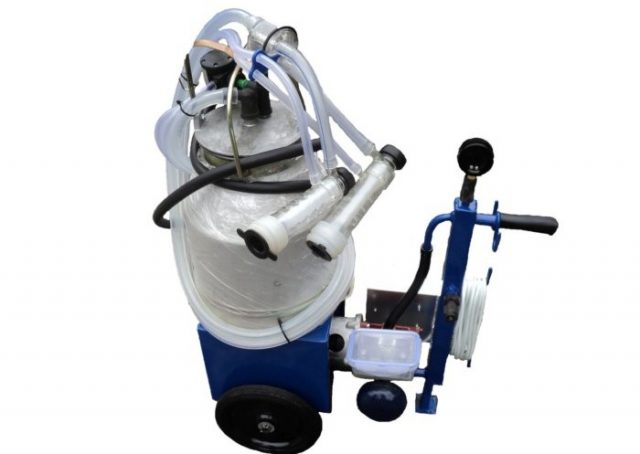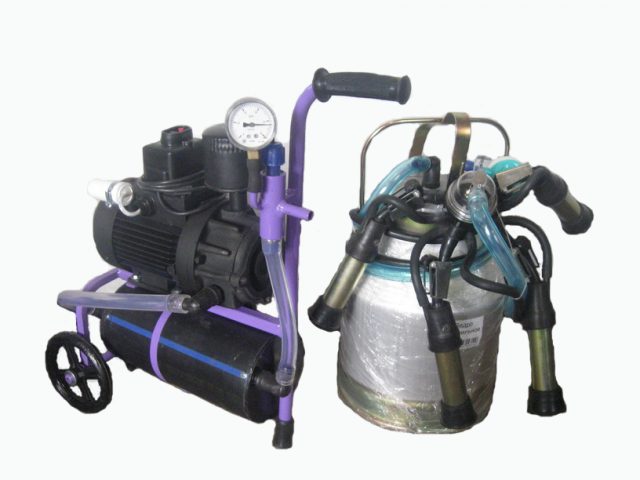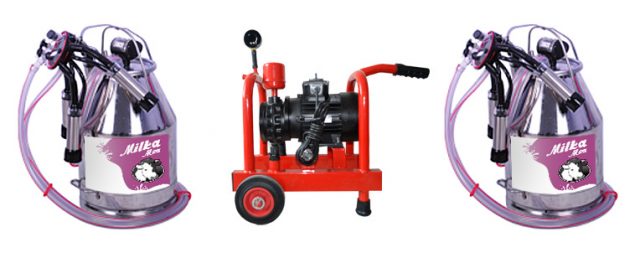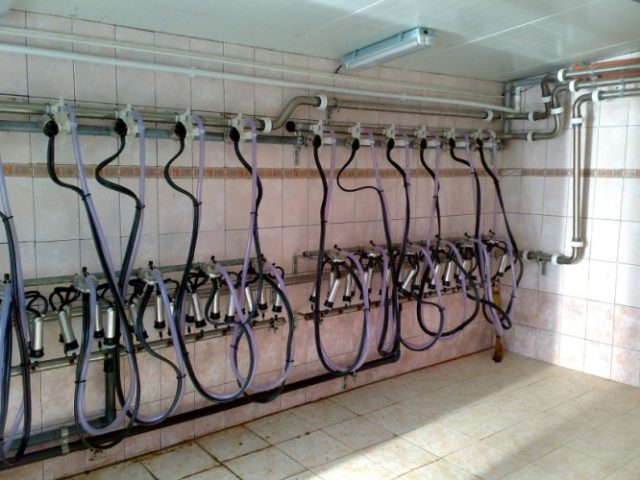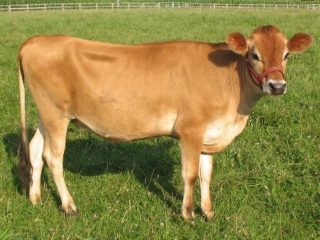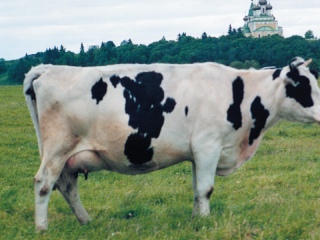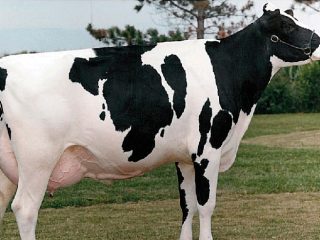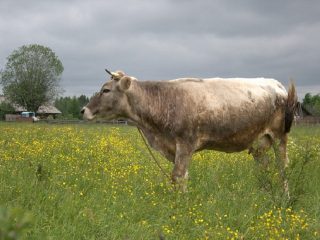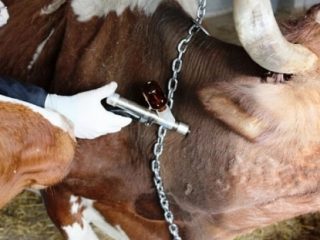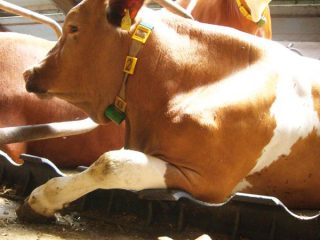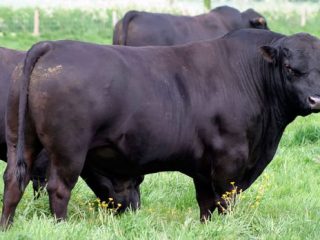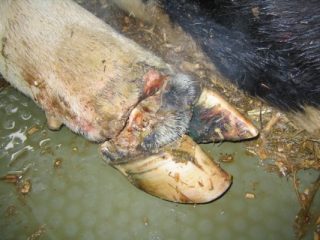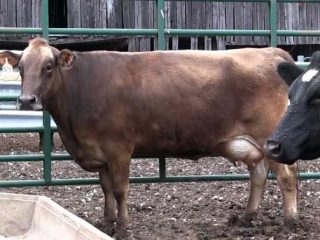Content
Reviews of milking machines for cows help cattle owners and farmers choose the best models from the equipment on the market. All units are designed and operate according to almost the same principle. Design features are inherent in each model, and it is this nuance that is taken into account when choosing.
What types of milking machines are there?
To understand the differences between different types of milking machines for cows, you need to know the main device.
Any milking machine has:
- Glasses consisting of a body and an elastic insert. The milking element is placed on each teat of the udder.
- Hoses made of non-toxic polymer for transporting milk and pumping air.
- Cans are usually made of aluminum or stainless steel. For household machines, containers can hold from 19 to 25 liters of milk.
- The pulsator, pump and collector are the main mechanisms of the device. The nodes create pulsating air pressure, due to which milking is carried out.
Initially, all milking units operated on a push-pull system. Milking was carried out by compressing the nipples with pulsating vibrations of the elastic inserts of the glasses. For cows, this method of pumping out milk is not very comfortable.Modern equipment operates on a three-stroke system. The elastic insert of the teat cup compresses and unclenches the nipple, and maintains a rest pause between actions. For the animal, the process resembles hand milking or the natural sucking of the udder by a calf.
Based on the method of milking cows, machines are divided into two types:
- suction;
- release
The first type of milking machines, due to the operation of a vacuum pump, sucks milk. Pressure is created inside the elastic inserts of the glasses. The milk begins to flow. When air in the system is replaced by vacuum, the pressure difference compresses the cup inserts. The nipples shrink and the milk stops flowing.
Squeeze milking machines deliver milk by mechanically squeezing the cow's teats. The equipment creates high pressure and vacuum in its system. The units operate with a lot of noise, but the cows adapt over time.
Milking machines express milk simultaneously from all the cow's teats or alternately in pairs. The type of milking is selected according to the age of the animal. For an old cow, the continuous method is suitable. Two- or three-stroke milking is acceptable for a young animal.
Industrial and domestic units differ in performance. For private use, milking equipment is usually mobile, small in size with simple controls. Industrial installations often require connection to stationary milk collection tanks. The equipment is equipped with automatic control, allowing you to select an individual mode for each cow.
The classification of milking machines differs by the type of engine used:
- Dry-type motors are environmentally friendly, easy to operate and maintain. The disadvantage is considered to be poor resistance to moisture. During storage, it is important to prevent moisture from penetrating into the engine. Dry motors are noisy and tend to overheat as the load increases.
- Oil engines are characterized by quiet operation. The unit does not bother cows and is resistant to high loads. The downside is the difficulty of maintenance. The oil level in the engine must be constantly maintained. In the cold it can harden, and after wear of the working units, flow out of the body. The engine becomes difficult to start, and the milking equipment becomes clogged with oil.
The vacuum pump is responsible for the process of milking a cow. In terms of design and operation, the unit is of three types:
- Diaphragm-type pumps are usually installed on budget devices for private use or a small farm. Such milking machines are designed for milking a maximum of 3 cows.
- Piston-type pumps are characterized by increased power. The unit is often installed on industrial devices. The pump has impressive dimensions, operates with great noise, and is prone to overheating.
- Dry and oil type rotary pumps are considered universal and are most often found on modern milking machines. The equipment operates quietly and does not disturb animals.
All types of milking machines are designed to work in certain conditions. This nuance must be taken into account when making a choice.
The video shows a farm:
Which type of milking machine is better - dry or oil?
An experienced farmer purposefully selects a milking machine for his cows. In order for an inexperienced person to understand between a dry and an oil-based apparatus, one must know the features of their structure and operation.
Dry vacuum pumps have graphite blades. They are slightly subject to wear, are cheap, but are afraid of dampness. Additional advantages include the following:
- easy maintenance;
- environmental friendliness due to the absence of oil emissions;
- light weight;
- easy pump start regardless of temperature conditions;
- no risk of milk contamination with oil.
The main disadvantage is considered to be noisy operation. In cows of shy breeds, milk yield decreases, and the animals behave aggressively.
Oil pumps operate stably as long as the oil level in the system is maintained and there are no leaks. The equipment has four undeniable advantages:
- quiet operation;
- resistance to overheating from load;
- milking several cows at the same time;
- long service life due to less wear of rubbing parts that are constantly in oil.
However, oil pumps have many disadvantages:
- starting is difficult and sometimes impossible in severe frosts;
- the oil level must be constantly monitored and periodically topped up, which leads to unnecessary costs;
- In case of oil release, the surrounding area, equipment, and milk are contaminated.
It is very difficult to determine which pump is better based on its advantages and disadvantages. The choice of model depends on the intended conditions of use. Each milking machine is no worse or better, but is designed to perform its task.
When choosing between an oil and dry pump, focus on the following indicators:
- Service staff. It is easier for one milkmaid to transport a mobile dry apparatus. For a complex crew, a unit with an oil pump is suitable.
- Number of cows.A dry type unit is suitable for servicing a small number of livestock, but it will not cope on a large farm. If there are more than 20 cows, then only equipment with an oil pump will ensure quick milking.
- Availability of service. If a person is poorly versed with technology and has no free time, preference is given to a dry milking machine.
- Life time. Oil reduces wear of rubbing parts and reduces the likelihood of pump overheating due to loads. The equipment will last much longer than dry-type analogues, even if stored in conditions of high humidity.
- Breeds of cows. Animals are characterized by timidity, which affects the decrease in milk yield. If cows are afraid of noise, it is better to refuse a dry type installation.
Having carried out an accurate analysis of all the nuances, you will be able to correctly decide on the choice of model.
The video compares different types of milking machines:
How to choose a milking machine
To make the right choice of milking machine, you need to clearly decide on three questions:
- financial opportunities;
- characteristics of the cow breed;
- farm needs.
For a small number of cows, the simplest machines with push-pull milking are chosen. Three-stroke milking machines are expensive. The equipment is used on large farms. Cows can be milked in a pasture or in a barn. If the first option is not excluded, preference is given to equipment mobility. The main criterion for choosing a model is the type of pump.
Rating of milking machines for cows
Each farmer has his own opinion about which milking machines are the best and which ones should be abandoned. A novice livestock breeder can rely on advice, reviews and ratings of models:
- Italian Milkline equipment was highly appreciated by farmers who prefer European quality. Silent operation allows the cow to be milked in the presence of the calf. Depending on the model, the device is capable of serving from 1 to 35 cows.
- The Delaval milking machine shown in the photo is equipped with a two-level vacuum pump. The presence of electronics for monitoring cow milking and transmitting data to the control panel gives the right to equate the equipment to a professional type. The unit is equipped with a milk sampling unit and has the ability to connect to the pipeline of a stationary system. The milking machine is intended for a farm with a large number of cows.
- The domestic brand “Uda” is represented by models 8a, 16a, 32, Herringbone and Tandem. The main difference is power, the ability to serve a certain number of cows. The milking machine, depending on the model, can serve from 100 to 350 heads. At the factory, the unit is connected by a milk line to a stationary milk receiver.
- For a private farmstead, the Veles device is considered an excellent choice. The equipment is used for one cow. You can serve up to 8 heads at a time. Milking time for 1 cow is about 10 minutes. The silent process does not frighten the calf.
- The domestic equipment manufacturer Doyushka produces milking machines for cows, goats, horses and even sheep. In private use, models 1P and 1C are popular. Large farms use powerful milking machines designed to milk at least 10 cows per hour.
- The Burenka mobile device is similarly produced by a domestic manufacturer. The equipment is easy to transport on wheels, even across the meadow to the milking place. The connection is made to an outlet.The installation can serve up to 15 cows.
- The popular brand “Moya Milka” presented 10 types of milking equipment. Models differ in performance and are equipped with a can made of aluminum or stainless steel. A big plus is considered to be quiet milking that does not frighten the calf.
- For farms with a population of 50 to 400 cows, a professional complex “Milk pipeline” has been developed. The equipment carries out milking, filtration and pumping of milk, transportation to a stationary container of the plant. Primary collection is carried out in a tank with a volume of 50 liters.
The rating of milking equipment was compiled taking into account reviews from farmers and ordinary cow owners. If other companies are not on the list, then they are no worse. Equipment must be selected according to demand, and the rating is only an auxiliary tool.
Conclusion
Reviews about milking machines for cows are of different types. Some people are happy with their purchase, while others are upset. There are a lot of reasons: inability to use, wrong choice of model, or vice versa, you were lucky to purchase exactly the unit that made servicing the cows easier.





